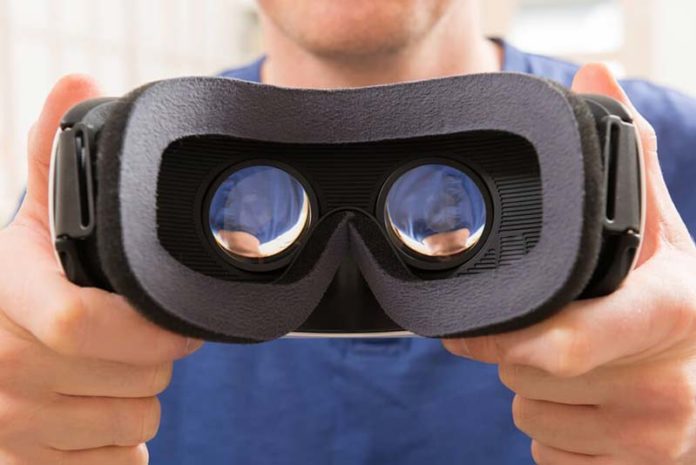The cheap VR headset is compelling because it’s easy to think you’re getting a bargain on a good entry point. You can see if this VR thing is really for you, and it won’t break the bank. The reality is that the cheap headset you’re buying might sour the entire experience for you. A better option might be to visit a gym, or an arcade, to experience a higher quality experience firsthand. Here are some of the reasons why that cheap headset isn’t worth your time or your money.
It Doesn’t Have Support
The cheaper headsets tend not to have very much support. You don’t necessarily need an 800 number to call if something goes wrong, but smaller companies with inferior products often skimp on things like well-written instructions. If you can’t understand how to setup or use your device, the entire effort is dead before it starts.
If your device breaks during the course of a workout, would the company provide a warranty or replacement? If you can’t count on any kind of warranty, the product might not be high quality. Sure, you’re just getting a cheap headset so no big deal. Right? Well, buy 2 or 3 of these cheaper ones and you’ve already gotten into the midrange of VR.
Support also means a community that loves the product and strives to find new ways to get the best possible experience. Both Vive and Oculus have communities on Reddit, with an existing community on MyFitnessPal for Vive as well. The no name headset might have a blog that has reviewed it somewhere, but it’s doubtful it has many users.
It Might Not Have Games
Where the users are determines where developers put their efforts. You can’t sell games if the userbase isn’t there, and right now the Vive and Rift are exploding with games. The cheaper headsets tend to rely on mobile games that must be downloaded individually through Google Play or the App Store for iPhone users.
If there isn’t a central marketplace of users to buy games, developers will flock to where those marketplaces do exist. This can make finding games for smaller name brands, especially those with a specific development platform, very difficult unless the brand is highly used. You won’t have a problem finding Google Cardboard apps, for instance, but could you workout in them?
Framerate and Immersion Challenges
Immersion is one of the pillars of a good VR experience. If the headset is letting light bleed in from the sides, where it doesn’t quite fit the shape of your face, you’re losing immersion. Screen quality and color vibrance also play a role in designing a killer VR application, as many VR games output in a higher definition.
Mobile headsets generally don’t allow for much mobility, ironically enough, because they are not designed to work with motion tracking accessories. This is one of the primary reasons to invest in a standalone VR setup. VR locomotion solutions are somewhat limited right now, but the Vive and Rift allow for decent enough motion.
[youtube https://www.youtube.com/watch?v=jIn8isaDhGI&w=560&h=315]
Having three dimensional movement, and the proper frame rate, also helps avoid motion sickness. However, these two elements must work together almost seamlessly. One of the best ways a developer can “fix” a game that is causing motion sickness is by improving the framerate and using some tricks to help our eyes focus on something fixed. Our eyes want to accept what they see as real, so tiny screen tears or frame stuttering can make us feel nausea and ruin the whole experience.
Shoddy Construction Makes a Bad Workout
You’re getting what you pay for when you buy a cheap headset. They need to cut costs somewhere, and there’s only so much downgrading you can do on the electronic guts of a VR headset to improve profits. Most of those cuts are going to come from using cheaper materials that break or crease under stress. Faux leather and cheap plastic might make the headset feel loose and cause it to fall off, assuming the pieces don’t break entirely.
Add your sweat into the mix and you’ve got a recipe for disaster. Again, the costs are so low you can almost accept the loss. The problem is by the time you realize you’ve been buying cheap equipment you’re already spending half as much as the real deal.
Other Considerations
There are other reasons to save for a Vive or Rift to improve your experience outside of how they are made, or the games available. Both have extremely precise controls that allow for a range of actions in VR. does the cheap headset have accessories that help improve the experience?
Ultimately, a better headset gives you greater access to the part of the market developing fastest. Fitness VR is rapidly changing thanks to the Rift and the Vive, and powerful mobile offerings like VirZOOM that are designed to work with other accessories. VirZOOM in particular is a reasonable price point if you don’t already own a PS4. If you do, consider PSVR to experience some mainstream titles at a consistent frame rate. These entry points allow you to scope out the potential of VR without spending thousands on a rig.
Of course, serious fitness people spend the same kind of money on exercise equipment. The question comes down to which form of fitness ultimately appeals most to you.











